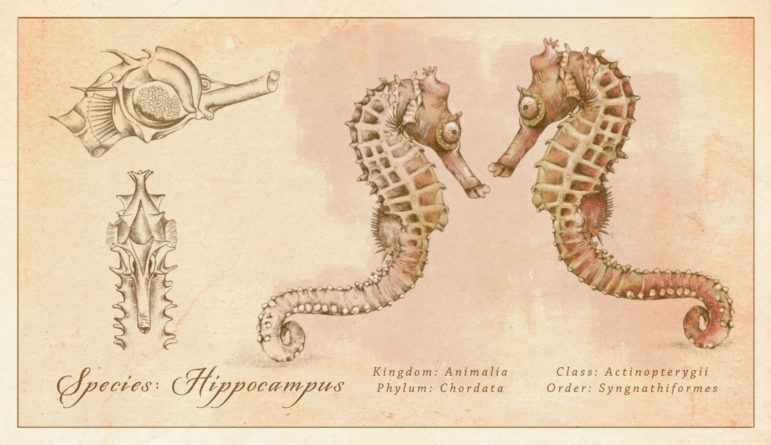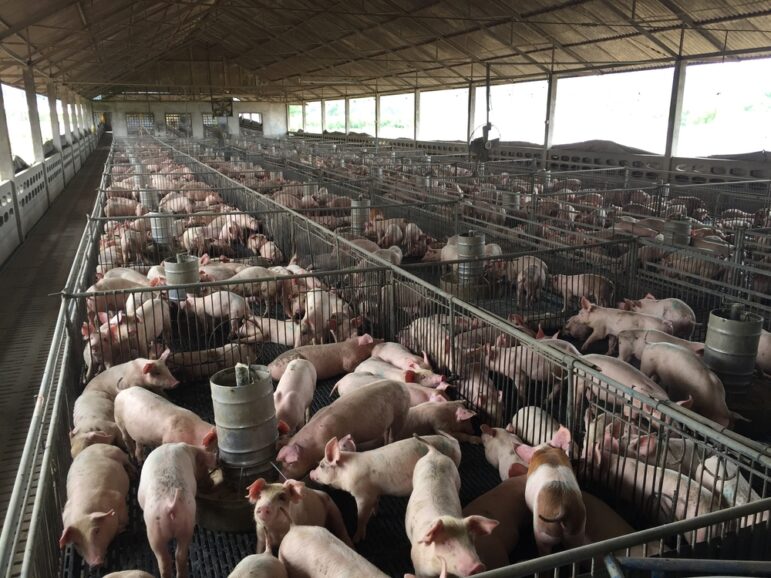

Illustration: Marcelle Louw for GIJN
What the Experts Say: Tips on Investigating Illegal Wildlife Trafficking
Read this article in
Editor’s note: A webinar related to this topic took place in July 2021. You can see the recording on GIJN’s YouTube channel. For more on the topic, be sure to check out GIJN’s guide, Illegal Wildlife Trafficking, from which this is excerpted.
GIJN invited experienced reporters and activists to answer one key question about reporting on illegal wildlife trafficking (IWT): What stories should investigative journalists interested in this subject concentrate on?
Their reflective answers — based on years in the field — feature in GIJN’s guide to reporting on a multi-billion dollar market that is contributing to species loss.
The experts are not of one voice. Some stress looking for more unusual stories: about the trafficking of less-noticed animals, about bushmeat, and investigating the zoonotic diseases that can pass between humans and animals.
Others emphasize investigating the criminals involved, especially at the middle and upper levels, and exposing corruption.
Several advise that the best stories are people-focused and caution against simplistic interpretations. Here are their tips.
James Fahn – Executive Director of the Earth Journalism Network at Internews
“I would recommend that journalists use #WildEye [a tool to track seizures, arrests, court cases, and convictions] and any other means to keep track of cases beyond the initial bust. Almost all the coverage we see is of the initial arrest, and there is almost no follow-up coverage to see who is behind the trafficking. As you probably know, it is almost always the poachers and low-level smugglers who get caught – and even they often get off lightly – whereas the kingpins behind the trade almost never get punished. And this is another key point, even where there are good laws, they are often not enforced, and then when they are, punishments are typically lenient because the judicial system does not consider it an important crime, despite all the damage it causes to human communities, not just wildlife.
“Also, given the focus now on preventing the spillover of pathogens that cause zoonotic diseases, it is probably time to take a closer look at the whole bushmeat trade. This rarely gets much attention because it is often considered to be a form of subsistence hunting, but it is big business, as well, and has a lot of serious consequences besides causing epidemics.”
Rachael Bale – Executive Editor of the animals desk at National Geographic
“Look for stories that you’re uniquely positioned to tell — those that are based in insular communities where you already have connections or in areas where you speak the local language and can therefore get a more inside perspective, for example. What can you get that no one else can?
“Also look for the stories about lesser-known or under-appreciated species. There’s lots of reporting out there on elephants, rhinos, and pangolins already. What animals aren’t we paying attention to? I also prefer stories with some nuance.
“You’re not often going to find a clear-cut bad guy vs. good guy story, and that’s okay.”
Julian Rademeyer – Director of East and Southern Africa at the Global Initiative Against Transnational Organized Crime, author of “Killing for Profit: Exposing the Illegal Rhino Horn Trade”
“Tell untold stories and look beyond the charismatic species that so often dominate headlines. Look to the oceans and the forests, which are sorely under-reported. And find the human stories that shed light on the machinations of the illegal wildlife trade from the poachers and collectors to the transnational networks that operate across borders, to those who investigate them. Look for unusual trends and quirky tales.
“Avoid falling into simplistic characterizations of good and evil, because they rarely apply. So much of what happens in the illegal wildlife trade falls into complex, grey areas. Investigate the broader ecological, environmental, societal, health, and economic impacts of IWT. Examine the drivers of trade.
“Most importantly, get out into the field and talk to as wide an array of people as you can find. The more you interview and read, the clearer the story ideas will become.”
Rene Ebersole – Freelance investigative journalist, author of The Black-Market Trade in Wildlife has Moved Online, and the Deluge is ‘Dizzying’ (National Geographic)
“While investigations of individual criminals trafficking XYZ species make interesting reading, it’s good to consider where broader issues intersect with IWT: climate change, disease, sustainability, legal reforms, biodiversity, innovation, technology, tourism, etc. That’s where you’ll find some of the most impactful stories.”
John E. Scanlon – Chair of the Global Initiative to End Wildlife Crime; Secretary-General of the Convention on International Trade in Endangered Species of Wild Fauna and Flora (CITES) from 2010-2018
“Journalists should look right across the illegal supply chain, from the wild places where the animals and plants are stolen to the various points of departure, their transit routes, points of arrival, and then into the markets where they are sold, and the places they are consumed. There is a story to be told right across this illegal supply chain. It’s not just about the poaching, but how the contraband is shifted, marketed, and by whom, and how it is consumed. It’s also about how local people are disrupted, their resources depleted, and how this illicit trade is fueled by corruption.”
Bryan Christy – Founder of the National Geographic Special Investigations Unit and author of the new novel, “In the Company of Killers”
“The best advice I can give to journalists investigating IWT is to find a compelling victim, an equally engaging villain, and tell the crime story.”
“Pick species that resonate because they’re beloved, or strange, on edge of extinction, or otherwise tantalizing. Umbrella species for storytelling include elephants, whales, polar bears, primates, big cats, and possibly bluefin tuna. These are charismatic megafauna that elicit an emotional response from a broad audience. A narrative featuring these species is different from one featuring pythons, monitor lizards, pangolin, orchids, etc. The latter deserve reporting, but they’re unlikely to result in big, robust stories that can affect policy change.”
“Approach the environment like a stock market investor. Recognize that some species can deliver reliable and predictable policy returns. Others are more speculative. If you want to be not just read, but also to make a difference, ensure your portfolio is sound. From 2012 to 2018 or so, elephant poaching and ivory trafficking was a story that got attention across the world, from tree huggers to crime fighters, prosecutors to policymakers. China shut its market. Invertebrates can’t generate that kind of movement without really compelling storytelling. (Krill, for example, deserves real effort.) Avoid editorializing. Accuracy is your best advocacy.”
Also see Christy’s tipsheet prepared for the 2017 GIJN conference in Johannesburg.
Andrea Crosta – Co-Founder and Executive Director of Earth League International
“My advice, or recommendation, when working or reporting on IWT is to take the time to really understand the illegal supply chain, its players, the real drivers, and enablers, the pressure points that are important to identify in order to act and disrupt the trafficking. In particular, the role and nature of the international Chinese trafficking networks are fundamental to understand if we want to address this problem effectively.”
Isabel Leal – Communications Director at the Wildlife Justice Commission
“Look at the trafficking of wildlife as a transnational issue, not siloed by country/region. Wildlife trafficking should be tackled as a criminal problem, not a conservation one. As for cases, I would point journalists in the direction of looking into the trafficking of lesser-known species, which happens at a massive scale and it is literally wiping out species of flora and also water fauna species, such as sea cucumbers and glass eels.”
Ceres Wan Kam – Wildlife Campaigner at the Environmental Investigation Agency
“This is a tough question because situations can change quite rapidly, as we have seen in 2020. Personally I think the most important stories are the ones not getting much time in the limelight:
- The high-level corruption in countries most impacted by IWT.
- Why illegal wildlife traders and poachers do what they do.
- How can we move away from the Western-centric conservation and lift local voices?
All these I think are important topics we currently do not know enough about in order to craft effective social and behavior change communication interventions.”
Pauline Verheij – Independent Wildlife Crime Specialist at Ecojust
“I would encourage journalists to move away from the sexy animals and explore illegal trade in lesser known species that are equally if not more destructive, as well as regions that are more difficult to navigate. Examples of this include:
- The illegal trade in birds and reptiles for pet markets in South Asia, especially India, Bangladesh, and Pakistan.
- Leopard poaching in Nepal, which is fueled by human-wildlife conflict.
- The role of the Chatuchak wildlife market in Bangkok in supplying huge amounts of live animals to the illegal trade.
- Question who are the players facilitating and benefiting from this trade?
- The illegal trade in cheetahs and great apes in the Middle East, mainly through social media. There have been a few items done on this but it still needs more attention, particularly to expose the players in the Gulf countries.
- Corruption is a key driver in all of this and should be a focus in any IWT story.”
Additional Resources
GIJN Resource Center: Illegal Wildlife Trafficking
10 Lessons from Our Global Collaboration on Pangolin Trafficking
Powering Up Geo-Journalism for Investigative Environmental Reporting
 Toby McIntosh is GIJN’s Resource Center senior advisor. He was with Bloomberg BNA in Washington for 39 years. He is the former editor of FreedomInfo.org (2010-2017), where he wrote about FOI policies worldwide, and serves on the steering committee of FOIANet, an international network of FOI advocates.
Toby McIntosh is GIJN’s Resource Center senior advisor. He was with Bloomberg BNA in Washington for 39 years. He is the former editor of FreedomInfo.org (2010-2017), where he wrote about FOI policies worldwide, and serves on the steering committee of FOIANet, an international network of FOI advocates.











